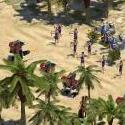-
Posts
245 -
Joined
-
Last visited
-
Days Won
7
RedFox last won the day on September 10 2013
RedFox had the most liked content!
About RedFox

Previous Fields
-
First Name
J.
-
Last Name
Fox
-
Skype ID
jorma.rebane
Profile Information
-
Gender
Male
-
Location
Estonia
-
Interests
C/C++, x86 ASM, hardcore performance
Contact Methods
-
Skype
jorma.rebane
Recent Profile Visitors
RedFox's Achievements

Duplicarius (4/14)
48
Reputation
-
Just thought it would be nice to clear this up. Due to some disagreements with the Dev team, I decided to withdraw from the position. It's quite unfortunate, but since teamwork didn't seem to be flowing in the desired direction and we couldn't come to common terms, I feel this is the best option. The long delay from WFG led to me finding a new job and I would much rather stick to that. I have no idea what WFG will do next regarding the fundraiser money, but I'm sure they'll find some way to put it into good use.
-

Alternative lobby TCP port
RedFox replied to fabio's topic in Game Development & Technical Discussion
If we manage to get NAT hole punching to work, then it doesn't matter what port number the client uses. As long as the listener server has its listening port open, we can create numerous connections from client to server and use the automatically opened ports on the client. -

Paid Development: September 2013 Activity Status
RedFox replied to RedFox's topic in Game Development & Technical Discussion
I agree Ykkrosh, it's tough working on large scale changes on such a large project - it often looks like operating cancer, really. I'd say my focus would be on reviewing and bugfixing megapatch so that all the problems get fixed. And in the future, we should definitely avoid megapatch situations, since they become increasingly difficult to maintain the longer they remain off the main svn trunk. -

Paid Development: September 2013 Activity Status
RedFox replied to RedFox's topic in Game Development & Technical Discussion
There is no October update thread. The last work I did was the first week of October where I fixed memory leaks in the new lobby, added VS2012 support for premake4 and some bug-fixes on megapatch (no new features). And the end of September I fell quite ill and was out of action for 2 weeks; actually I've yet to fully recover - I should probably give myself more rest. Since there has yet to be any discussion on resuming paid development, I'm remaining in stand-by. -

Pathfinding yet again: NavMeshes
RedFox replied to MattFox's topic in Game Development & Technical Discussion
Is there any further progress on this test? What kind of issues are you facing currently? Updating the navmesh? Performance issues? For grid distances you could just use the standard "manhattan distance" method. It's a simple and fast method and also gives decent results. -

Pathfinding yet again: NavMeshes
RedFox replied to MattFox's topic in Game Development & Technical Discussion
Looking good. To avoid the worst case of A*, you'll have to do some simple heuristics like described before. An iterative flood-fill method should be pretty fast and do the trick. Running some tests with my own A* setup on reasonably complex map layouts, a 48x48 (2304 tiles) can take around ~1500 iterations to cover the map, while a 512x512 (262144) can have over 88700 iterations per A* search query. If you can reduce the number of cells tenfold from a 256x256 map (~65k -> ~6k), you'd already cut down the number iterations by a huge amount, to somewhere around ~5000 for the whole map. Looks like a huge algorithmic victory to be gained regardless -
We are actually considering moving the AI to C++ because of how badly it performs in JS. It would save us a lot of time in the long run if we started working on a new AI in pure C++ instead of expanding the JS AI. It would also solve any limitations of JS and the duplication of game state (it's a major slowdown having full gamestate duplication from C++ to JS).
-
I think the problematic cases are when drivers have bugs and/or incorrectly implement features. Though cross-checking features would be a good way to eliminate hopeless ancient drivers.
-

Pathfinding yet again: NavMeshes
RedFox replied to MattFox's topic in Game Development & Technical Discussion
When it comes to optimization, I would rather focus on a well thought out algorithmic approach at first. Micro-optimizations as some call them shouldn't be the focus, though they shouldn't be disregarded either - a good cache locality optimization can make many algorithms several times faster. I guess the main benefit of a grid-based system is its relative sequential nature, which is better for CPU cache than other pointer based methods. Notoriously, linked lists are ridiculously slow on modern hardware, even though they are algorithmically faster for insert/remove, any simple array/vector based system will beat it hands down because sequential memory is naturally attuned for CPU cache. When you are working on your new solution, I hope you will keep this in mind. Although, if we the algorithm significantly reduces overall complexity, it will definitely be worth it. I'll be looking forward to what you can conjure in the upcoming few weeks. -
Exactly. If we plan to support 10-year old hardware, then any hardware since 2005 will have OpenGL 2.0 support. The only issue can be with some non-standard compliant drivers that fail to optimize or properly compile the GLSL shaders - so far we had an issue with pre-processor not working on OSX GLSL compiler. It might be simply because people are using outdated graphics drivers. Perhaps we should compile a list of suggested drivers for every platform? It would make our life easier if we just ensured proper driver suite is installed with the game, right? As for ARB shaders, the main problem is that the ARB shader code is already outdated compared to our GLSL code. It's becoming more and more of a maintenance issue than anything else. On performance I'd rather look at our current GLSL implementation and how well the code is optimized - the fact is that we haven't actually optimized the shader code at all kind of puts it in an unfair position.
-
Regarding fixed-function pipeline, we have decided already months ago that it will be dropped in future releases. So all in all, it shouldn't really be a surprise. You can get a cheap modern laptop with just 200$. I don't see any reason to support fixed function pipeline as it is, since it's a relic Look at this from another perspective - should we had incorporated MS-DOS support in 2003, just because some people somewhere still used it? Even though it was a decade-old relic already?
-

Pathfinding yet again: NavMeshes
RedFox replied to MattFox's topic in Game Development & Technical Discussion
We won't need any special treatment of enemies in the pathfinder. The hypothetical new "CollisionManager" would detect collisions and decides whether to start fighting (collide with enemy), pushing (collide with friendly), or try to find a path around the friend/foe (disengage from fights). -

Paid Development: September 2013 Activity Status
RedFox replied to RedFox's topic in Game Development & Technical Discussion
Entities are 2D bounding boxes (since they can be buildings, units, flora, fauna...). The PFor implementation isn't entirely horrible - though it has quite a few concurrency issues. We don't use OpenMP because we already implement pthreads and there is literally no useful cross-platform library with a PFor. The patch already implements thread pools if you didn't notice, so I wouldn't worry about the implementation efficiency. Since we use C++03, the code isn't that nice. In C++11 we could get away with cool little lambdas: ps::parallel_for(0, size, [&](int atIndex) => { printf("%d\n", atIndex); }); As I measured speedup from multi-threading, my results were: 1 thread: 24ms/turn 2 threads: 14ms/turn 4 threads: 8ms/turn If we push the code into a worker thread - something that works in background to the whole engine, we will definitely reduce the time taken, even on single core CPU's. However, we have to account for situations where calculating ranges takes more than 1 turn and how that will affect the simulation state. We will probably have to wait out the results from previous turn regardless. All in all, it might be worth the shot and it would have less concurrency issues than PFor. It would definitely make it easier to do range checks between formations. However, once a formation is in range, we will still need to target individual soldiers which is again one of the slow cases. I wonder how Total War handles this problem? -

Paid Development: September 2013 Activity Status
RedFox replied to RedFox's topic in Game Development & Technical Discussion
The testbed used was my own private OpenGL engine and doesn't have anything special other than an interactive demo for debugging / testing. I'm quite sure that my SAP implementation isn't completely optimized in the algorithmic sense. The most expensive parts are moving elements in the axis, which forces us to update the random-access indices. I thought I could make it work, but SAP isn't meant for random access. Even the GPU + SAP demo sweeps the entire set - which is very efficient, but totally different from what we need. Now, I'm not saying our implementation is perfect - far from it actually. Because of existing code, we are forced into this random-access range detection. Furthermore, SAP is good for collision detection, but doesn't look like very good for range detection. I mean I somehow made it work for ranges - but it was a freak attempt IMHO. Perhaps we could use regular grid subdivision and implement SAP in every subdivision grid? That would eliminate a lot of X-axis alignments for sure. If we use subdivision, we have to ensure that entities only exist in one grid at a time, yet ensure that they will be correctly detected from neighboring grids. This simplified drawing illustrates the issue: Entity A, inside grid tile 1, queries for entities in range. Obviously entity B is in range, but it exists in grid tile 2. So in order to get accurate results, we must also include all entities in tile 2. The current implementation in 0AD SVN would place entity B into both grid tile 1 and grid tile 2. This means we have to sort the results and call std::unique to remove duplicate entities. I think we can improve the current implementation of Spatial Subdivision by improving on these issues. We should also use floating point numbers internally for faster Squared Distance calculation - meaning we could return accurate results and avoid any further calculations.





